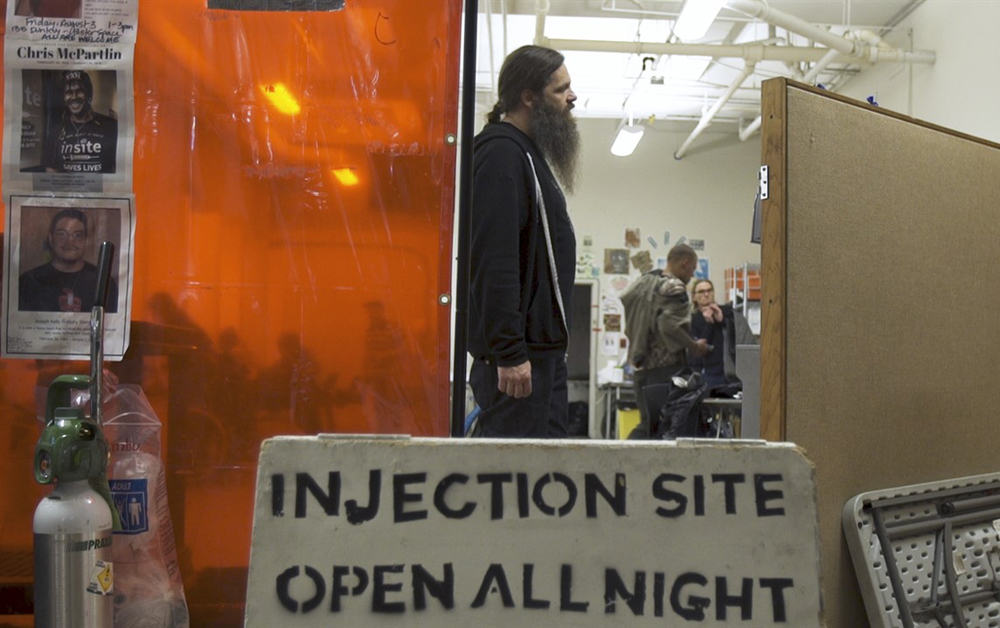“Let’s remember where we are,” Ronnie, the leader of a staff meeting says in “Love in the Time of Fentanyl,” though you’re unsure anyone in the gathering of volunteers at the Overdose Prevention Society in Vancouver needs the reminder. They’re running out of space for names on the graffiti wall that resides outside the clinic as a memorial, but you sense the community collective is buying time for many as they take fate into their own hands as an opioid epidemic roils through the downtown eastside and the best answer would seem to lie in a supervised injection site to gradually ease addicts off their temptation to use. It’s a busy center where the staff are all former or current users — the latter are asked not to use during their shifts — and it wouldn’t seem like there’s much order as director Colin Askey and cinematographer Eric D. Sanderson zip about the chaotic premises, but in fact an admirable system has been built where those in the throes of addiction might be able to see a way out when they are tended to by those who have often overcome an overdose themselves.
However, as much as chemical dependency has dictated the lives of those onscreen, Askey is careful not to let addiction define his subjects as people as the director buzzes about the OPS facility and witnesses acts of compassion in every corner. Tactfully avoiding the gritty aesthetic one might expect in favor of an airy, wide open frame, the film is underlined by a general feeling of goodness as care is provided in obvious ways, with OPS answering calls of those they hear suffering on the streets, but far less overtly when any resistance to treatment is met with volunteers opening up about their own experiences to make them more comfortable. The work is difficult and while no one would let on they’re traumatized by the overwhelming nature of what they’ve taken on, the psychological and emotional toll of it will come up when OPS staff has to address local officials in an effort to expand their services.
If “Love in the Time of Fentanyl” is about the power of community, Askey gets at the heart of it when you may never hear the word hope, but you see it through the actions of those he follows amidst a tragic situation. The film is particularly enlivened by Trey, the most creative of the staff who sees bringing a wheelchair to someone in the hospital as an adventure through the city and amuses himself when illustrating a farewell card with a Smurf, telling his departing co-worker “Don’t go turning blue on us,” and as heavy as the subject matter is, Askey keeps the documentary light on its toes, always moving when the need for OPS seems unrelenting, but also adopting the attitude of its subjects where it’s likely a waste of time to look back. Instead, the film may actually present a way forward when, with as few resources as the OPS appears to have at their disposal, it seems smaller communal operations such as this that could make the largest impact and although they can only treat one person at a time, there’s a lot in the compassionate doc that adds up.
“Love in the Time of Fentanyl” will screen in person at DOC NYC on November 17th at 9 pm and will stream online via the DOC NYC platform through November 27th.




